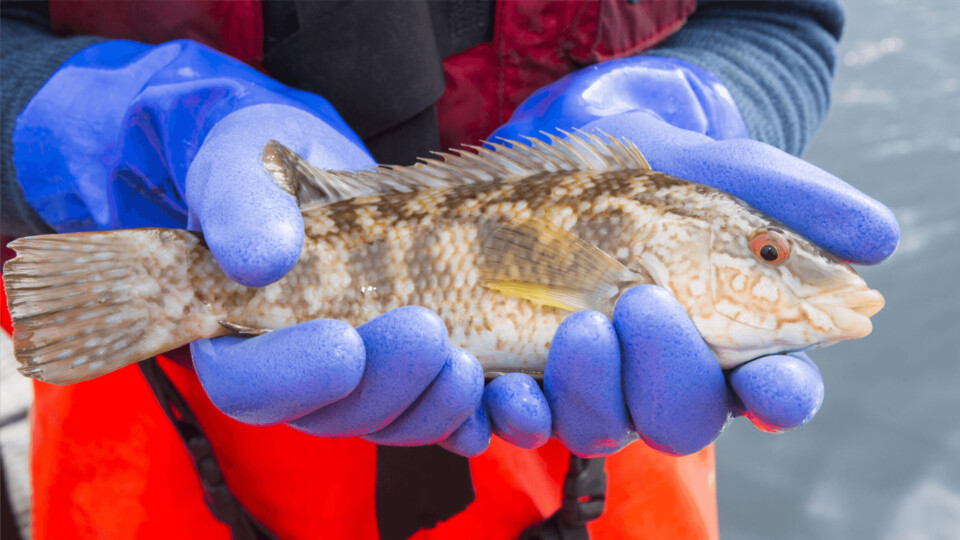
Farmed wrasse ‘work better if acclimatised to cages’
Acclimatising farmed Ballan wrasse to fish farm cages before putting them in with salmon helps them perform better as cleaner fish, a study in Scotland has shown.
While the delousing performance of wild wrasse is usually good, that of farmed wrasse is variable, possibly because of different conditions in hatcheries and sea cages.
Researchers from Stirling University’s Institute of Aquaculture (IoA) conducted three passive-acoustic telemetry (PAT) trials at a salmon farm to compare the behaviour of wild and farmed wrasse and test the effect of acclimatising farmed wrasse to sea-cage conditions before deployment.
Hydrophone array
Up to 40 fish were monitored simultaneously for 60–124 days by triangulating tag positions within a hydrophone array every 6-10 seconds. This data was used to assess fish depth and preferred cage locations and calculate activity, orientation and home ranges.
The researchers found that wild wrasse occupied shallower depths than farmed wrasse, which remained near the bottom of the cages.
Swimming activity was higher in wild wrasse with significant diurnal variations and they rapidly developed large home ranges, preferring cage corners.
Improved behaviour
Hatchery-and-sea-cage acclimatisation improved the behaviour of farmed wrasse, which rapidly moved up the water column and established home ranges. They also developed diurnal activity patterns, which researchers said may indicate a positive response to acclimatisation.
The wrasse were acclimatised for one month in the hatchery (natural photoperiod, hides and feed blocks) followed by two weeks in a 2m x 2m x 4m keep net (with hide and feed block) within the salmon net pen.
After the acclimatisation period, the keep net was opened to allow the fish to swim out into the net pen. The scientists did it this way to allow the procedure to be easily integrated into current commercial husbandry practices.
Home ranges
The researchers concluded that acclimatising farmed wrasse to sea-cage conditions positively improved and encouraged behaviours similar to those seen in wild wrasse, including diurnal rhythms and the establishment of home ranges, and recommended it for all farmed wrasse prior to deployment to improve delousing performance.
A full article on the research, Pre-deployment acclimatisation of farmed ballan wrasse (Labrus bergylta) to sea-cage conditions promotes behaviour analogous to wild conspecifics when used as cleaner fish in Atlantic salmon (Salmo salar) farms, has been published in the journal Aquaculture. The abstract can be read here.
A collaborative project by salmon farmers Mowi and Scottish Sea Farms, feed manufacturer BioMar, the IoA and the Scottish Aquaculture Innovation Centre (SAIC) has successfully closed the breeding cycle for Ballan wrasse for the first time, allowing more wrasse to be bred for use in eating sea lice off farmed salmon and reducing the need to fish for wild wrasse.























































